Physics in the kitchen: The Magical Can Crusher
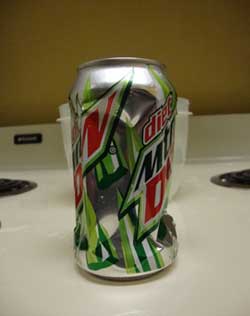
It’s not The Force, but it is caused by a force. Try this simple experiment and watch a can magically crush before your eyes.
What you Need- One empty soda can
- One oven mitt or tongs
- A stove
- One medium bowl of cold water
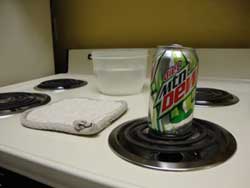
What to Do
- Take the empty aluminum can and put about two tablespoons of water in it.
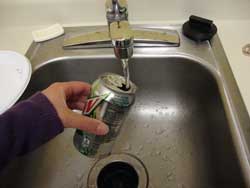
- With the burner turned off, put the can on a burner on the stove.
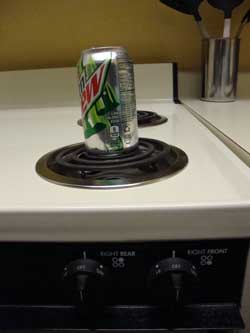
- Turn the burner on.
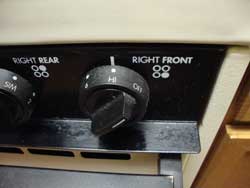
- Wait for the water in the can to boil. When you see steam come out of the can, turn off the burner.
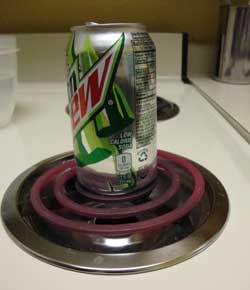
- Using the oven mitt or the tongs, pick up the can and immediately turn it upside down into the bowl of cold water.
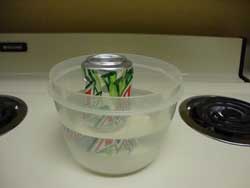
- What do you hear? What do you see?
The first thing to remember is that EVERYTHING is made of atoms, which are VERY small particles. Inside the can there is a little bit of water and a lot of air. Both air and water are made of atoms that are constantly moving around, bouncing off of each other and bouncing off the inside walls of the can. The atoms in the air have more room to move around than the atoms in the water, but all atoms are always in motion. When you heat up an object the atoms move faster, when you cool down an object the atoms move slower. So, when you boiled the water in the can the atoms in the water moved around faster until they move so fast that they went through a phase change and changed from the liquid, water, to a gas called water vapor. Water vapor, which could be seen as steam escaping from the can, replaced the air that was originally in the can by pushing the air out of the can. The atoms in the water vapor moved around faster than the air atoms that were initially inside the can. These water vapor atoms collided with the interior wall of the can more often and with more speed than the air that was initially in the can, creating more pressure against the walls.
When you turned the can over and placed it in the cold water, the water vapor atoms inside the can slowed down until they were moving slow enough to go through a phase change again where they condensed and became water. Without the pressure from the atoms colliding against the can’s wall, the can imploded from the pressure from the air outside of the can pushing against the can’s exterior walls.
To Learn More











